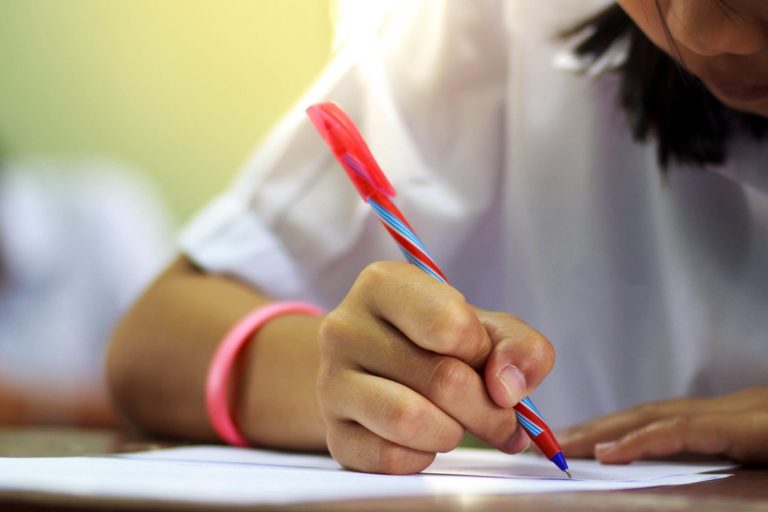Educators know that students are more likely to succeed if they set goals – whether it’s finishing their homework for one night, getting a good grade for a marking period, or working their way through the courses required for a college major.
But while the value of goal setting is not disputed, there are nuances to how it should be structured, and there are different types of goals with different outcomes.
It has been defined various ways, but one major study called goal setting “essential to successful management of one’s learning” and described these key elements for it to be effective in schools: “It is important…that goals mobilize effort, increase persistence, lead to task-appropriate study strategies and influence personal efficacy through the commitment and subsequent effort they generate.”
What is Student Goal Setting?
It may seem obvious what it entails, but teachers should understand that often students don’t entirely understand the process or the different types of goals, says Aleidine Moeller, a professor at the University of Nebraska and the author of a five-year study of its use in foreign language learning.
“Goal setting is the process of establishing clear and usable objectives for learning,” she says, noting that there are two distinct types of goals.
Students can establish “mastery goals” or “learning” or “task-involved” goals. They help develop a “motivational pattern and deeper level of engagement” and can change behavior. They connect effort and achievement and can help students gain an appreciation of goal setting and develop their own habits for doing it.
The other type is performance-based and encourage students to compete or avoid failure. “Performance goals focus on one’s ability and sense of self-worth,” Moeller says. “Achievement is measured by doing better than others and, more importantly, the recognition from superior achievement. Learning is viewed only as a way to achieve a desired goal,” she says, noting that performance goals emphasize the specific outcome, and a person’s self-worth is determined by their perception of how they have performed.
Educators often champion mastery goals that encourage students to learn about and understand a topic, rather than, for instance, just strive to get an A on a test.
The Benefits of Student Goal Setting
For several decades there has been research showing the value of goal setting, including a 1992 study indicating that goals set by both parents and students improved academic achievement. Research also often has found that students who set goals more often complete assignments and get better grades.
Last year, in a detailed review of goal setting, the American Institute of Research showed how it is a “learning to learn” skill that can “help fuel students’ sense of agency, intrinsic motivation, and capacity to manage their own learning.” That report details the various subject areas where studies have shown goal setting results in better academic performance, but notes it has other value, too. “Research on goal setting has also shown links with a range of outcomes associated with the deeper learning, such as self-regulated learning, self-efficacy, intrinsic motivation, and cognitive engagement.” Other experts say it helps motivate students, gets them to focus, and gives them a sense of direction.
Beyond that, Lindsay Barrett, a former teacher who now works as a literacy consultant and writes about goal setting and student organizational skills, says that goal setting can help motivate students long term, getting them to think about college and careers, and giving them skills that will be valuable in both.
How to Implement Student Goal Setting in Your Classroom
For younger students, it may be important to explain goal setting, even distinguishing a goal from a “wish”, says Barrett. At any level, she says students can benefit from an example of successful goal setting in a novel, the work of an inventor, scientist, or historical figure – or even an athlete, which can be instructive in a physical education class. They should emphasize the steps in achieving a goal.
Goals should revolve around student mastery, and some research suggests they are more effective when they are designed by the student, who then also should evaluate their success.
“Learning outcomes/objectives are used in most classrooms but they are largely determined by the teacher, placed on the white board or overhead screen. But goal setting skills often are not explicitly taught to the learners,” Moeller says.
One familiar structure for goal setting has proven to give students good guidance to structure goals. It uses the SMART acronym, which recommends these elements:
Specific. Students should focus attention on what they specifically want to achieve. Instead of wanting to “do better in math”, for example, they should expect to “do the math homework and get help once a week from teacher.”
Measurable. Students need to see when progress is being made or that they aren’t achieving goals. Questions such as “How do I know when I’ve reached my goal?” or “What will I be able to do when I’ve reached it” should be considered at the start.
Achievable. Students should feel challenged, but the goal should be possible. Does the student have the right resources available to them and the time to complete the task? Is it possible given their abilities and circumstances without discouraging them too much?
Relevant. The goal should be personal and relevant to the student. If it matters to them, they will be more likely to accomplish it.
Timely. A deadline is essential. What are the start and finish dates?




